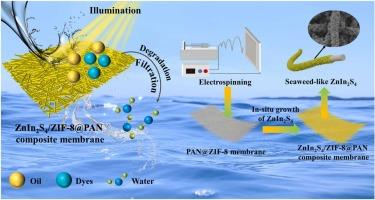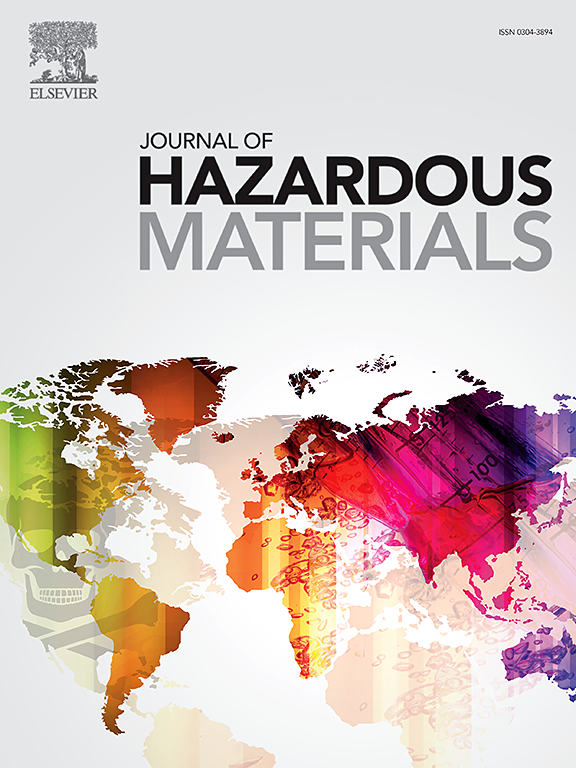Exceptional anti-fouling, self-cleaning and high-flux ZIF-8@polyacrylonitrile based nanofiber composite membrane via in situ growth of seaweed-like ZnIn2S4 for efficient separation of emulsified oily wastewater
IF 12.2
1区 环境科学与生态学
Q1 ENGINEERING, ENVIRONMENTAL
引用次数: 0
Abstract
The membrane separation technique encounters the problems of low permeability and weak anti-fouling ability during the large-scale treatment of emulsified oily wastewater. To address this issue, the high-flux and photocatalytic self-cleaning polyacrylonitrile (PAN)-based nanofiber composite membrane (ZnIn2S4/ZIF-8@PAN) was constructed via the electrospinning of PAN@ZIF-8 nanofiber membrane with rivet-like structure and in situ growth of highly porous seaweed-like ZnIn2S4 in the hydrothermal process. The intrinsic hydrophilicity, porous and hierarchical structure of ZnIn2S4 effectively regulated the transport channel, superhydrophilic/underwater superoleophobic feature (WCA: ~ 0 °, UOCA: up to 155.9 °), and ultra-low oil adhesion behavior of composite membrane, thus achieving superior separation flux of diverse surfactant-stabilized O/W emulsions (up to 5062.7 ± 189.4 L·m-2·h-1) and separation efficiency of 99.11 ± 0.18%. As evidenced by the results of Hermia model and dynamic oil adhesion experiment, the ZnIn2S4/ZIF-8@PAN composite membrane displayed exceptional oil resistance and anti-fouling ability under harsh conditions, retaining its high separation efficiency (separation flux: 4408.1 L·m-2·h-1, rejection rate: 99.03%) for O/W emulsions after 10 consecutive separation cycles. Furthermore, we discovered that the composite membrane offered favorable self-cleaning performance towards photocatalytic degradation of various organic dyes under exposure to visible light, with degradation efficiency up to 96.88% within 120 minutes. The DFT calculation, EIS impedance, and free radical inhibition experiments demonstrated that the well-matched band structure and intimate contact interface between ZIF-8 and ZnIn2S4 facilitated the efficient transfer and separation of photo-induced charge carriers. Such PAN multifunctional composite membrane has great potential in the field of complex oily wastewater treatment.

求助全文
约1分钟内获得全文
求助全文
来源期刊

Journal of Hazardous Materials
工程技术-工程:环境
CiteScore
25.40
自引率
5.90%
发文量
3059
审稿时长
58 days
期刊介绍:
The Journal of Hazardous Materials serves as a global platform for promoting cutting-edge research in the field of Environmental Science and Engineering. Our publication features a wide range of articles, including full-length research papers, review articles, and perspectives, with the aim of enhancing our understanding of the dangers and risks associated with various materials concerning public health and the environment. It is important to note that the term "environmental contaminants" refers specifically to substances that pose hazardous effects through contamination, while excluding those that do not have such impacts on the environment or human health. Moreover, we emphasize the distinction between wastes and hazardous materials in order to provide further clarity on the scope of the journal. We have a keen interest in exploring specific compounds and microbial agents that have adverse effects on the environment.
 求助内容:
求助内容: 应助结果提醒方式:
应助结果提醒方式:


